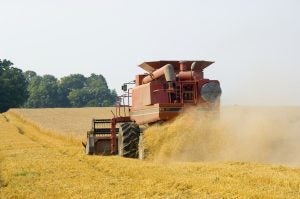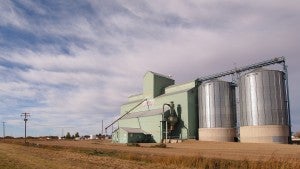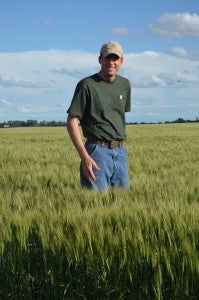 Journalist Michael Pollan deserves credit for elevating the national conversation about food. Over the course of 25 years, his articles and books have thoughtfully contemplated the troubling side effects of the American diet and the way our food is produced.
Journalist Michael Pollan deserves credit for elevating the national conversation about food. Over the course of 25 years, his articles and books have thoughtfully contemplated the troubling side effects of the American diet and the way our food is produced.
But his latest piece in the New York Times Magazine reads like a script for a black and white Western, with food companies, agribusiness and commodity producers cast in the role of Bad Guy and local organic farmers and vegans cast as the Men in White Hats.
In Pollan’s script, the bad guys are responsible for everything from America’s weight problem and rising health care costs to widespread environmental degradation and monocultures that threaten national security. If only the law would get on the good guys’ side, he muses.
Food production is actually changing
All industries have issues that continually need to be addressed, and the food industry is no exception.
Agriculture consumes a lot of land and water and emits greenhouse gas emissions that must be curbed. And, yes, our diets have contributed to America’s obesity epidemic.
Except, our food system is changing, more than Pollan acknowledges.
The uptick in consumer demand for local, organic products is promising. So, too, are the contributions that Pollan’s so-called villains – the companies, agribusinesses and commodity farmers who produce what’s on our plate – are making to the environment. They deserve recognition.
[Tweet “What @michaelpollan gets wrong about Big Ag, via @davidfesta and @GrowingReturns:https://edf.org/hAg”]
Grocer giant transforming supply chain
 When North America’s largest grocer commits to reducing its greenhouse gas footprint, it sends ripples through the agricultural supply chain. That’s what happened when Walmart set an ambitious greenhouse gas reduction goal and asked its suppliers to use fertilizer-efficient grains in their products.
When North America’s largest grocer commits to reducing its greenhouse gas footprint, it sends ripples through the agricultural supply chain. That’s what happened when Walmart set an ambitious greenhouse gas reduction goal and asked its suppliers to use fertilizer-efficient grains in their products.
Fertilizer pollution has been a nagging problem for decades.
Scientists estimate that only 40 percent of fertilizer applied in a given season is absorbed by crops that year. While some fertilizer stays in the soil, the rest is lost to the air in the form of nitrous oxide, a powerful greenhouse gas – or it washes into rivers and streams, creating dead zones that contaminate drinking water supplies and kill fish.
Today, more than 15 food companies are implementing programs to source fertilizer-efficient ingredients, including big brands such as General Mills, Smithfield Foods, Kellogg’s and Campbell Soup. Look for more producers to come on board in coming months.
2 million acres already enrolled, more coming
Change will never occur if we stay entrenched in political ideologies.
One of those programs, SUSTAIN, now part of Land O’ Lakes, committed to enrolling 10 million acres of farmland in sustainable practices by the end of this decade.
It leaves us a long way from making sustainability the business norm across the nation’s 250 million acres of corn, wheat and soybeans; but 10 million is a lot of farmland.
And change is coming rapidly. In just two years, SUSTAIN has reached farmers on 2 million acres. Think about the impact we could make if even more ag retailers and advisors got into the game.
Farmers as good guys
 As my colleague Miriam Horn notes in her new book, Rancher, Farmer, Fisherman, some of the biggest conservation heroes in America are so-called industrial-scale farmers such as Justin Knopf, who grows wheat and soybeans on thousands of acres across the Kansas prairie.
As my colleague Miriam Horn notes in her new book, Rancher, Farmer, Fisherman, some of the biggest conservation heroes in America are so-called industrial-scale farmers such as Justin Knopf, who grows wheat and soybeans on thousands of acres across the Kansas prairie.
To restore and protect his soil, Knopf forgoes tilling and plants cover crops. Many of his farmer neighbors do the same. So do hundreds of the heartland farmers Environmental Defense Fund works with to make sustainable practices the norm.
Those who paint large-scale farmers, agribusiness and food companies as the monolithic villain ignore the improvements that are being made today on the ground, in corporate offices and in food company kitchens. And they do little to further the dialog about how we’re going to meet growing demands for food in a changing climate.
Change won’t occur overnight. But it will never occur if we stay entrenched in political ideologies.
By working together, we can scale up sustainable practices much more rapidly. Given future population projections, we have no time to lose.
This piece originally appeared on Huffington Post and is reprinted with permission. You may also enjoy:
Why Kansas farmer Justin Knopf strives to emulate the native prairie >>
A coalition of uncommon bedfellows is bringing sustainable agriculture to scale >>
Let’s focus on a farm’s performance, not its size >>










3 Comments
Prairie is grassland. When you write about Knopf’s farmland on the KS prairie, you really mean plains. Don’t feel bad, many people in the Great Plains make the same mistake, perhaps because prairie sounds better than the flatness implied by plains. But for me and other conservationists in the GP, there is no confusion: Conservation of prairie is a top priority, almost an emergency situation, and USDA-subsidized crop farming is and has long been the biggest threat to its survival. Judging by this article’s many tags, none of which includes prairie or grasslands, it looks like you, and perhaps Pollan as well, have many other priorities that come before prairies.
Thanks, Michael, for this important reminder and for your work on prairie conservation. Justin indeed farms the Kansas plains, though he does try to emulate the original prairie grasslands that once were there. We agree that prairies are high-priority for conservation, which is why we support productive farming that limits sprawl and avoids converting marginal lands. We’re also developing habitat exchanges for species including monarch butterflies, greater sage-grouse and the lesser prairie-chicken. More information is at https://www.edf.org/ecosystems/habitat-exchanges-how-do-they-work and https://www.edf.org/ecosystems/avoiding-conversion-rangelands.
Most of the changes you quote in this article that Big Ag (corps & farmers) have made have come from the organic farming world. And the organic farming world had to make those changes WITHOUT the government subsidies (welfare) that Big Ag (corps & farmers) have enjoyed. In fact, organic farmers pay an additional tax in order to be organic. Additionally, notedly absent from your article are the chemicals Big Ag spray all over the land, killing the bees & butterflies; and the tons of antibiotics Big Ag feeds to their livestock – that create antibiotic resistant bacteria and that ends up in our waters and land. So if you want your article to be credible, make sure you include the whole story…not just the bits that are convenient.